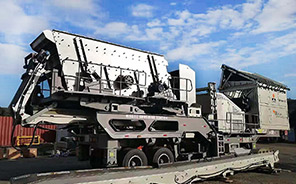A ball mill is a crucial piece of equipment in gold mining and mineral processing, often used to grind ores like granite (which may contain gold-bearing minerals) into fine particles for further extraction. Below is a detailed overview of how ball mills are applied in gold mining, especially when processing hard rocks like granite:
—
1. Role of Ball Mills in Gold Mining
– Grinding Ore: Ball mills crush and grind gold-bearing granite or other ores into a fine powder (<200 mesh) to liberate gold particles for cyanidation, gravity separation, or flotation.
– Secondary Grinding: Often used after primary crushing (e.g., jaw crusher) and secondary crushing (e.g., cone crusher).
– Versatility: Works for both free-milling gold ores and refractory ores (where gold is locked in sulfides).
—
2. Key Components of a Ball Mill
– Rotating Drum: Filled with steel balls (grinding media) and ore.
– Liners: Protect the drum from wear (rubber, manganese steel, or ceramic).
– Drive System: Electric motor coupled with gears/pulleys.
– Discharge Mechanism: Grate or overflow design to separate ground material.
—
 3. Processing Granite in Gold Mining
3. Processing Granite in Gold Mining
– Granite is a hard, abrasive rock that may host gold in quartz veins or sulfide minerals.
– Challenges:
– High silica content increases wear on mill liners/balls.
– Requires robust equipment (e.g., high-chrome steel balls).
– Solutions:
– Use of larger ball mills (e.g., 2.4m x 3.6m) for higher throughput.
– Closed-circuit grinding with classifiers (e.g., hydrocyclones) to improve efficiency.
—
4. Types of Ball Mills for Gold Mining
| Type | Description |
|———————|—————————————————————————–|
| Wet Ball Mill | Most common; water added to form slurry for easier grinding and extraction. |
| Dry Ball Mill | Used where water is scarce; less efficient for fine grinding. |
| Grid Ball Mill | Forced discharge via grate; better control over particle size. |
| Overflow Mill | Simpler design; slurry overflows discharge end. |
—
.jpg) 5. Optimizing Gold Recovery from Granite
5. Optimizing Gold Recovery from Granite
– Grind





Leave a Reply